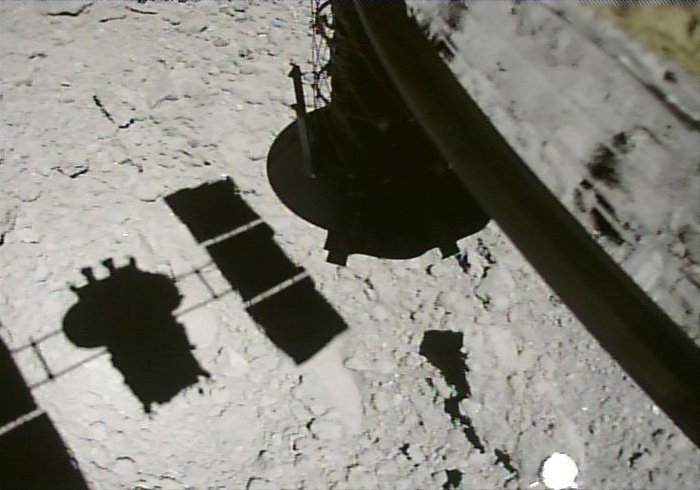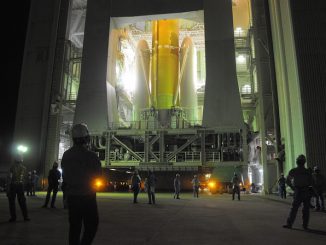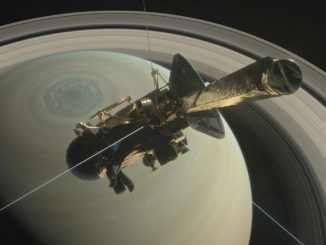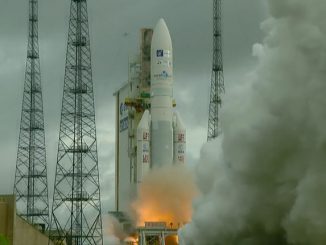
Approaching the one-year anniversary since its arrival at asteroid Ryugu, Japan’s Hayabusa 2 spacecraft has deployed a target marker near an artificial crater created by an explosive charge in April, a guide post that could help the probe steer toward another pinpoint touchdown to collect a second batch of samples for return to Earth.
That assumes mission managers approve plans for a second touch-and-go landing on the asteroid. The maneuver would come with some risk, and scientists believe Hayabusa 2 has already retrieved enough asteroid material to meet minimum mission success criteria.
Hayabusa 2 approached within around 30 feet, or 9 meters, from Ryugu’s surface May 30 and dropped a bright white target marker over the location where an explosive impactor deployed from the spacecraft struck the asteroid in early April. Mission designers put the Small Carry-On Impactor on Hayabusa 2 to expose material from within the asteroid, bits of rock that were shielded from radiation and other asteroid weathering affects from sunlight and extreme temperature swings.
The spacecraft gathered samples from Ryugu’s surface in February. Engineers designed Hayabusa 2 to collect samples from up to three locations on the asteroid, but mission managers have likely ruled out gathering a third sample.
Hayabusa 2 tried to drop the target marker during a previous descent in mid-May, but the craft autonomously aborted its approach to the asteroid at an altitude of about 160 feet (50 meters) after its laser altimeter made an incorrect distance measurement. Ground controllers re-planned the descent and successfully completed the target marker’s deployment May 30.
The two close approaches over the freshly-carved crater last month provided high-resolution images for ground teams to analyze before a final decision on whether to proceed with a second sampling attempt.
Ryugu measures about 3,000 feet (900 meters) in diameter, and scientists classify it as a C-type asteroid, meaning it is rich in carbon and other building blocks necessary for life.
Developed and operated by the Japan Aerospace Exploration Agency, Hayabusa 2 arrived at Ryugu last June, and is set to depart the asteroid in November or December for the return cruise to Earth powered by ion thrusters. But first, Hayabusa 2 will release its fourth and final rover to hop across the asteroid, following the successfully exploration of Ryugu’s surface by three mobile robots last year.
The spacecraft will jettison a re-entry capsule protected by a thermal shield to plunge into Earth’s atmosphere in December 2020, when the return craft will parachute to a landing in Australia.
Scientists will transfer the asteroid specimens to laboratories for detailed analysis in hopes of learning more about the history of the solar system.
Email the author.
Follow Stephen Clark on Twitter: @StephenClark1.



